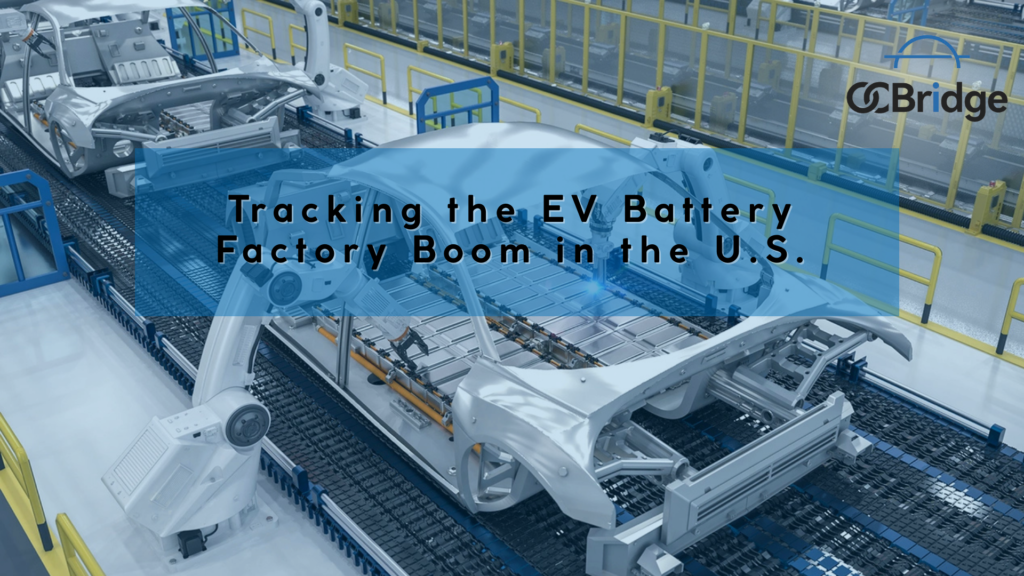Tracking the EV Battery Factory Boom in the U.S.
The landscape of electric vehicle (EV) battery production in North America has undergone a remarkable transformation in recent years. What began as a small effort to bring EV battery manufacturing back to the U.S. has quickly gained significant momentum, resulting in a full-blown construction boom. In 2019, the U.S. had only two operational EV battery factories, with another two under construction. Fast forward to today, and there are 32 battery factories either planned, under construction, or already operational across the country.
The Impact of Government Policies on Battery Manufacturing
Government policies have played a crucial role in shaping this transformation. While earlier initiatives laid the groundwork, recent laws have provided a much-needed push to accelerate growth in the EV sector. The Inflation Reduction Act (IRA), passed in 2022, has been a game-changer. Initially aimed at supporting clean energy and technology manufacturing, the IRA has provided significant incentives for automakers and battery manufacturers to invest in U.S.-based facilities. These incentives, including tax credits for both EV buyers and manufacturers, have created strong financial motivations to build and source batteries domestically.
However, with Donald Trump securing victory in the 2024 elections, the future of the EV battery sector remains uncertain. His administration’s policies may impact the pace of investments and regulatory support, potentially altering the trajectory of EV battery manufacturing in the U.S.
The Onshoring Wave
The shift to onshore EV battery production is about more than just reducing reliance on foreign supply chains; it’s about securing a competitive edge in the global EV market. By 2021, many automakers began announcing plans to build EVs and batteries closer to home. This move was accelerated by the need to avoid supply chain disruptions, like those seen during the COVID-19 pandemic, and to ensure local manufacturing could meet rising demand for electric vehicles.
As a result, the U.S. is poised for a surge in domestic EV battery manufacturing, with over $112 billion in investments pledged for new plants and facilities by 2030. These facilities are expected to produce up to 1,200 gigawatt-hours of battery capacity annually — enough to power about 18 million EVs.
EV Battery Manufacturing Timeline
Here’s a breakdown of key milestones in EV battery manufacturing across the U.S.:
Before 2019:
-
Tesla’s Gigafactory Nevada (Sparks, Nevada): With a $9.8 billion investment, production began in 2017, creating 4,000 jobs.
-
AESC’s Smyrna Plant (Smyrna, Tennessee): Production began in 2012, employing 300 people.
2019-2022:
-
SK Battery America’s Plant (Commerce, Georgia): With a $2.6 billion investment, production started in 2021, creating 2,600 jobs.
-
General Motors’ Ultium Cells Plant (Lordstown, Ohio): With an investment of over $2 billion, production began in 2022, providing 2,100 jobs.
-
Mercedes-Benz Battery Plant (Woodstock, Alabama): With a $1 billion investment, production started in 2022.
2023-2024:
-
General Motors’ Ultium Cells Plant (Spring Hill, Tennessee): With a $2 billion+ investment, production is set for 2024, bringing 1,300 jobs.
-
Hyundai’s Mobis Plant (Montgomery, Alabama): With a $205 million investment, production begins in 2024, providing 400 jobs.
-
Stellantis’ NextStar Energy JV Plant (Windsor, Canada): With a $5 billion CAD investment, production starts in 2024, creating 2,500 jobs.
-
Gotion’s Manteno Plant (Illinois): With a $2 billion investment, production begins in 2024, generating 2,600 jobs.
-
Our Next Energy’s One Circle Plant (Van Buren Township, Michigan): With a $1.6 billion investment, production begins in 2024, creating 2,100 jobs.
Future/Planned (2025 and Beyond):
-
BMW Battery Assembly Plant (Woodruff, SC): With a $700 million investment, production is set to begin in 2026, creating 300 jobs.
-
Daimler, Paccar, Accelera, and EVE Energy Amplify Cell Technology Plant (Marshall County, Mississippi): With an investment of $2-3 billion, production begins in 2027, creating 2,000 jobs.
-
Ford’s BlueOvalSK Battery Park (Glendale, Kentucky): With a $5.8 billion investment, production starts in 2025-2026, generating 500 jobs.
-
Ford’s BlueOval City Plant (Stanton, Tennessee): With a $5.6 billion investment, production begins in 2025, creating 2,500 jobs.
-
Ford’s BlueOval Battery Park Michigan(Marshall, Michigan): With a $2 billion investment, production starts in 2026, generating 1,700 jobs.
-
General Motors’ Ultium Cells Plant (Lansing, Michigan): With a $2 billion+ investment, production starts in 2025, providing 1,360 jobs.
-
General Motors’ Samsung Plant (New Carlisle, Indiana): With a $3 billion investment, production starts in 2026, providing 1,700 jobs.
-
Honda’s L-H Battery Company (Jeffersonville, Ohio): With a $4.4 billion investment, production begins in 2025, creating 2,200 jobs.
-
Hyundai’s SK On (Bartow County, Georgia): With a $5 billion investment, production begins in 2025, generating 8,100 jobs.
-
Hyundai’s HMG-LGES Battery JV (Savannah, Georgia): With a $4.3 billion investment, production starts in 2025, creating 2,000 jobs.
-
Stellantis’ Kokomo Gigafactory 1 (Kokomo, Indiana): With a $3.1 billion investment, production begins in Q1 2025, creating 1,400 jobs.
-
Stellantis’ Kokomo Gigafactory (Kokomo, Indiana): With a $3.2 billion investment, production begins in 2027, providing 1,400 jobs.
-
Toyota’s TBMNC (Liberty, North Carolina): With a $13.9 billion investment, production begins in 2025, creating 5,000 jobs.
-
Volkswagen’s PowerCo (Ontario, Canada): With a $7 billion CAD investment, production begins in 2027, generating 3,000 jobs.
-
AESC’s Bowling Green Plant (Bowling Green, Kentucky): With a $2 billion investment, production starts in 2026, creating 2,000 jobs.
-
AESC’s Florence Plant (Florence, South Carolina): With a $3.12 billion investment, production begins in 2026, generating 2,700 jobs.
-
Gotion (Big Rapids, Michigan): With a $2.36 billion investment, production starts in 2025, creating 2,350 jobs.
-
Kore Power’s KOREPlex (Buckeye, Arizona): With a $1.25 billion investment, production begins in 2025, generating 2,250 jobs.
-
LG Energy Solution’s LGES Michigan (Holland, Michigan): With a $3 billion investment, production begins in 2025, creating 1,200 jobs.
-
LG Energy Solution’s LGES Arizona (Queen Creek, Arizona): With a $5.5 billion investment, production begins in 2026, generating 1,000+ jobs.
-
Northvolt (Quebec, Canada): With a $5.2 billion investment, production begins in 2025, creating 4,000 jobs.
-
Panasonic’s Astra Enterprise Park (De Soto, Kansas): With a $4 billion investment, production starts in 2025, creating 4,000 jobs.
The Growing Landscape of EV Battery Factories
As battery manufacturing capacity increases in the U.S., key states like Michigan, Georgia, Tennessee, Kentucky, and Indiana are seeing massive investments. By 2028, over 1,000 gigawatt-hours of annual battery production capacity are expected to be in operation — enough to power 10 million electric vehicles. This clearly signals how quickly the EV market is expanding.
However, some challenges remain. Reports from Financial Times in August 2024 highlighted that 40% of over 100 clean energy projects, including battery plants, have been delayed. Despite these setbacks, major projects with substantial investments continue to make significant progress.
Job Opportunities in the EV Battery Sector
As the EV battery manufacturing sector grows, it’s not just about building factories — it’s also about creating jobs. The industry is expected to generate tens of thousands of new employment opportunities, spanning skilled labor to research and development roles. Engineers, technicians, production workers, and supply chain managers are in high demand as the sector expands.
By 2028, the announced projects are expected to support nearly 30,000 new jobs. These opportunities will be spread across various states, particularly in the Southeast, Midwest, and Southwest regions, where the most significant investments are being made. The incentives in the IRA are not only fueling the construction of these facilities but also creating sustainable, long-term employment opportunities in the clean energy sector.

Looking Ahead
While the future remains uncertain due to shifting political landscapes, the demand for electric vehicles continues to rise. According to recent EPA projections, electric vehicles accounted for 12% of all U.S. vehicles produced in 2023 — a 70% increase from the previous year. With continued government support through tax incentives and policies like the IRA, the U.S. is preparing for a major shift in its automotive and energy sectors.
Conclusion
The U.S. is in the midst of a historic boom in clean energy manufacturing, with the EV battery sector leading the charge. Although the path ahead may be shaped by political changes, the rapid growth of domestic battery production capacity is key to meeting the rising demand for electric vehicles. As investments continue to pour in and policies evolve, the U.S. is positioning itself to remain a dominant player in the global electric vehicle market for years to come.



